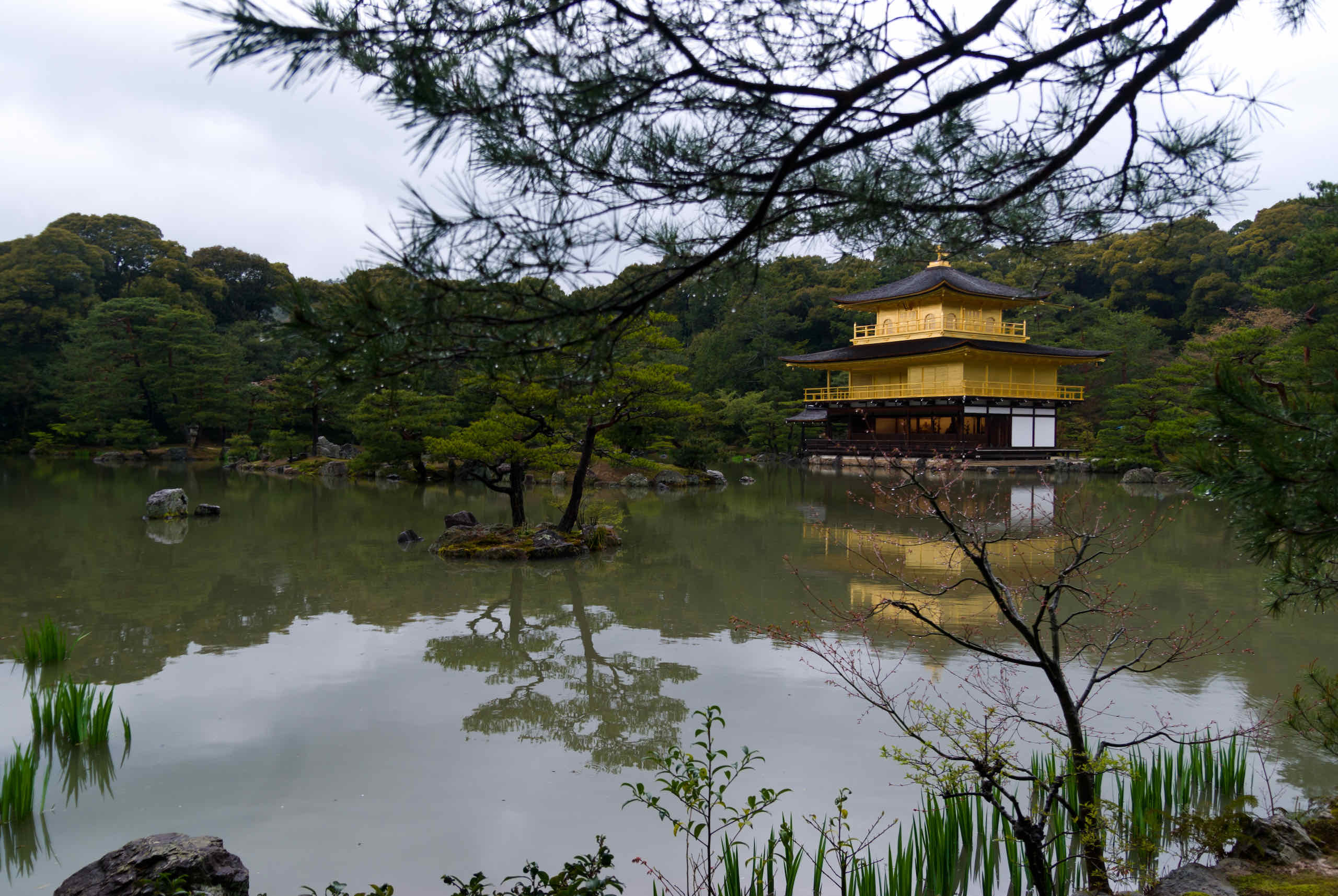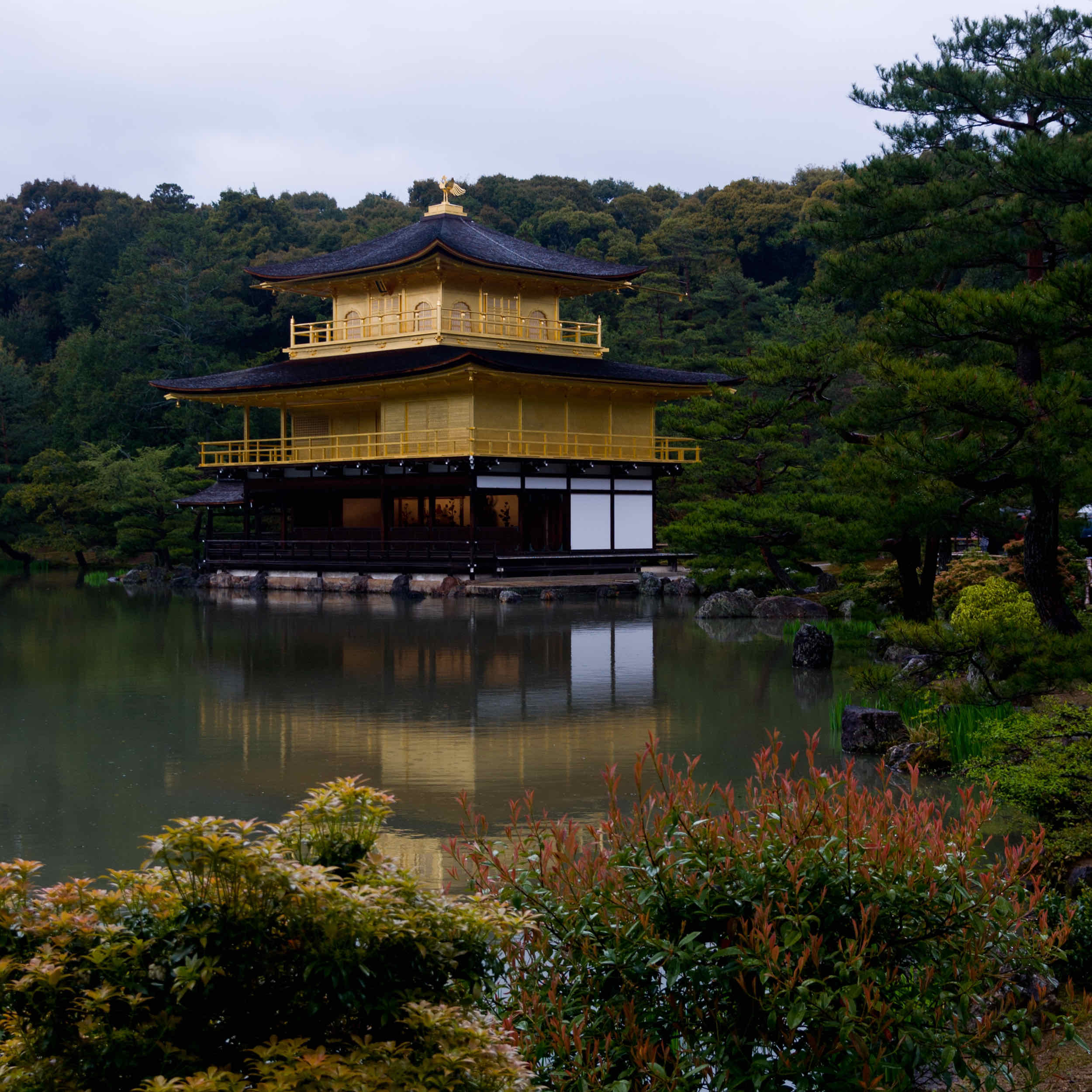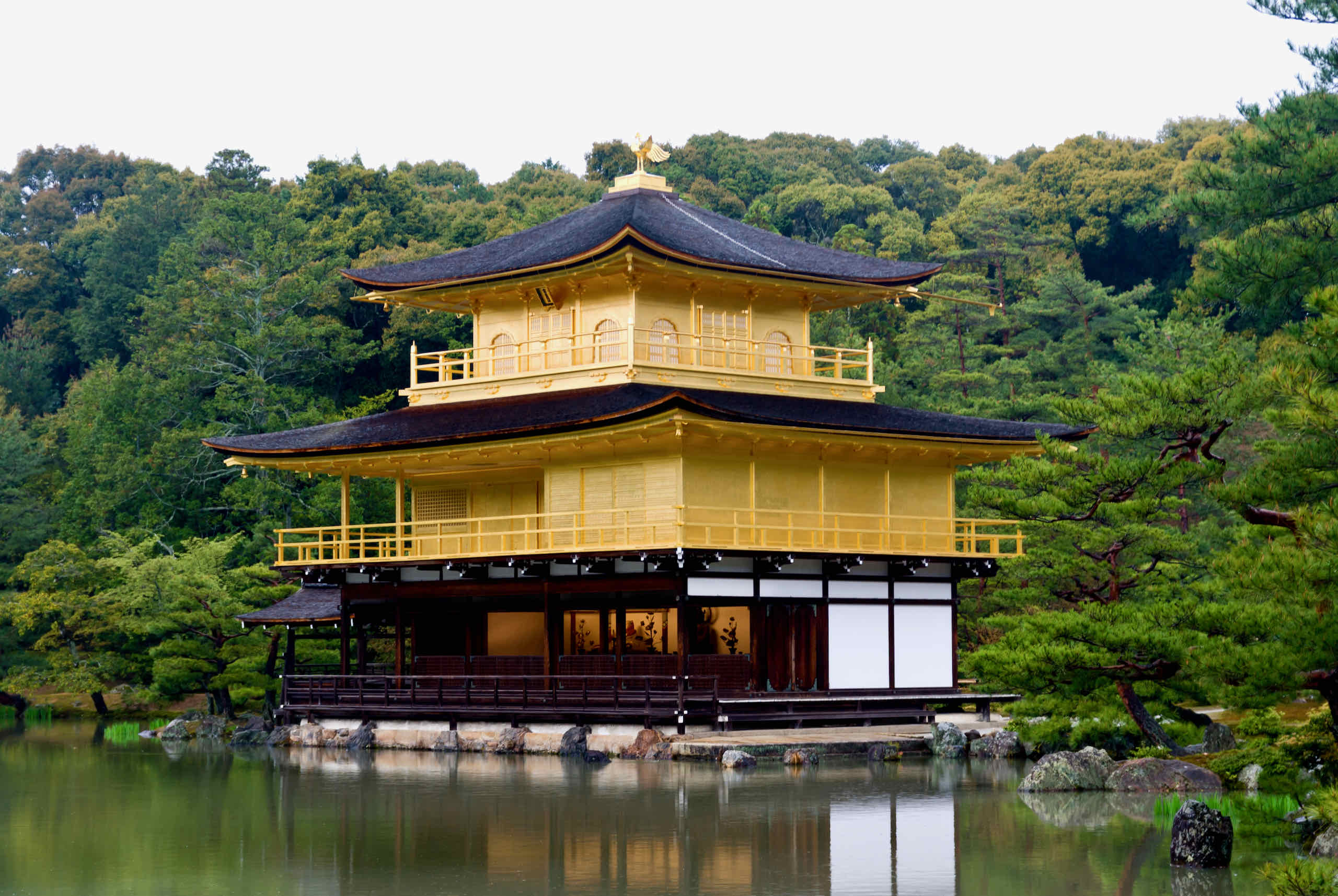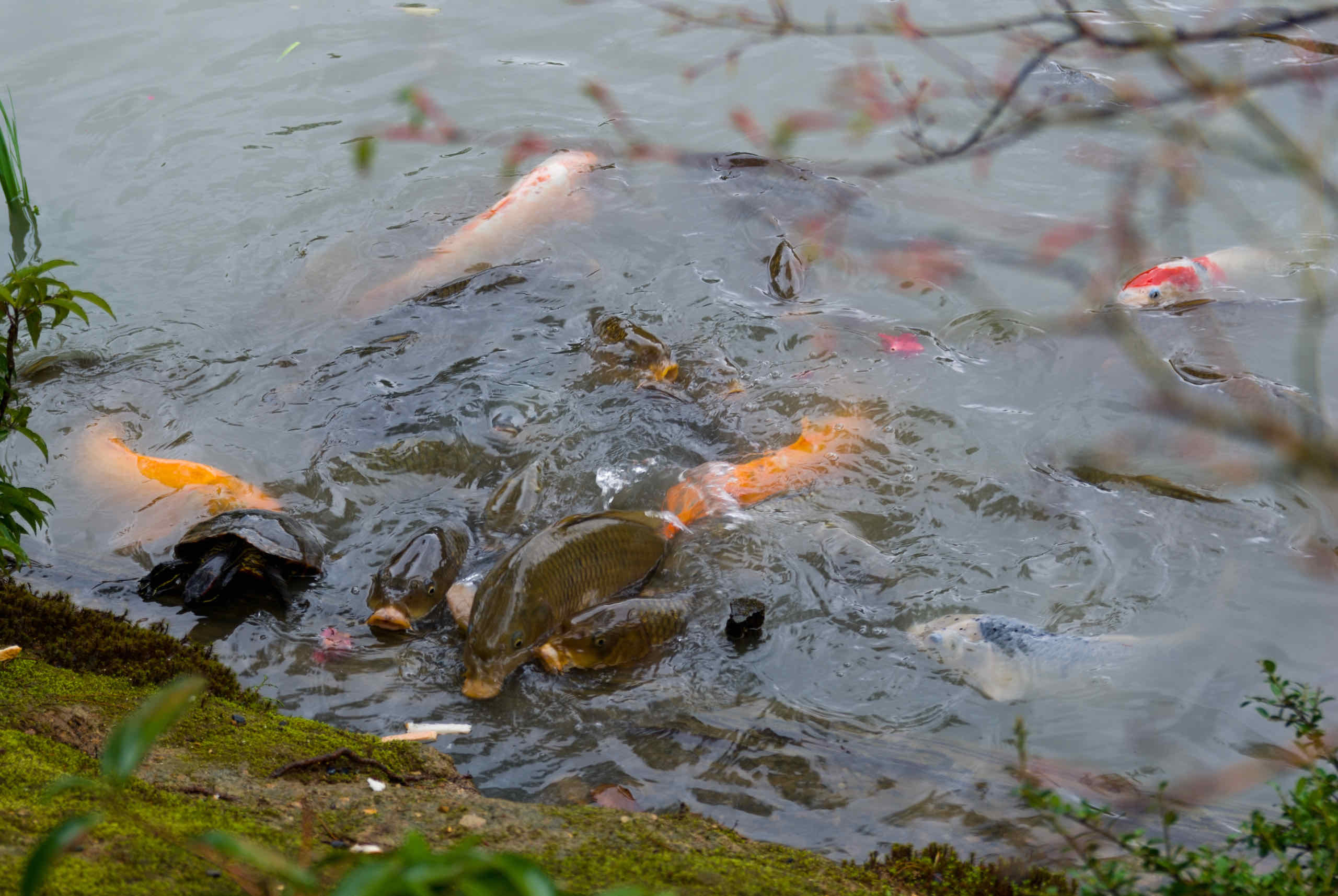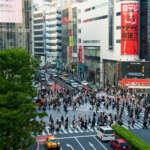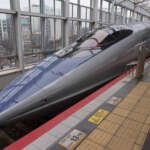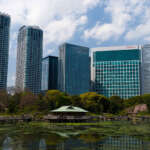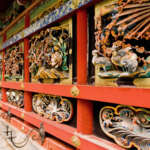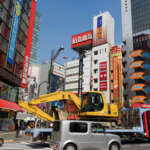Japan: Kinkakuji (Temple of the Golden Pavilion)
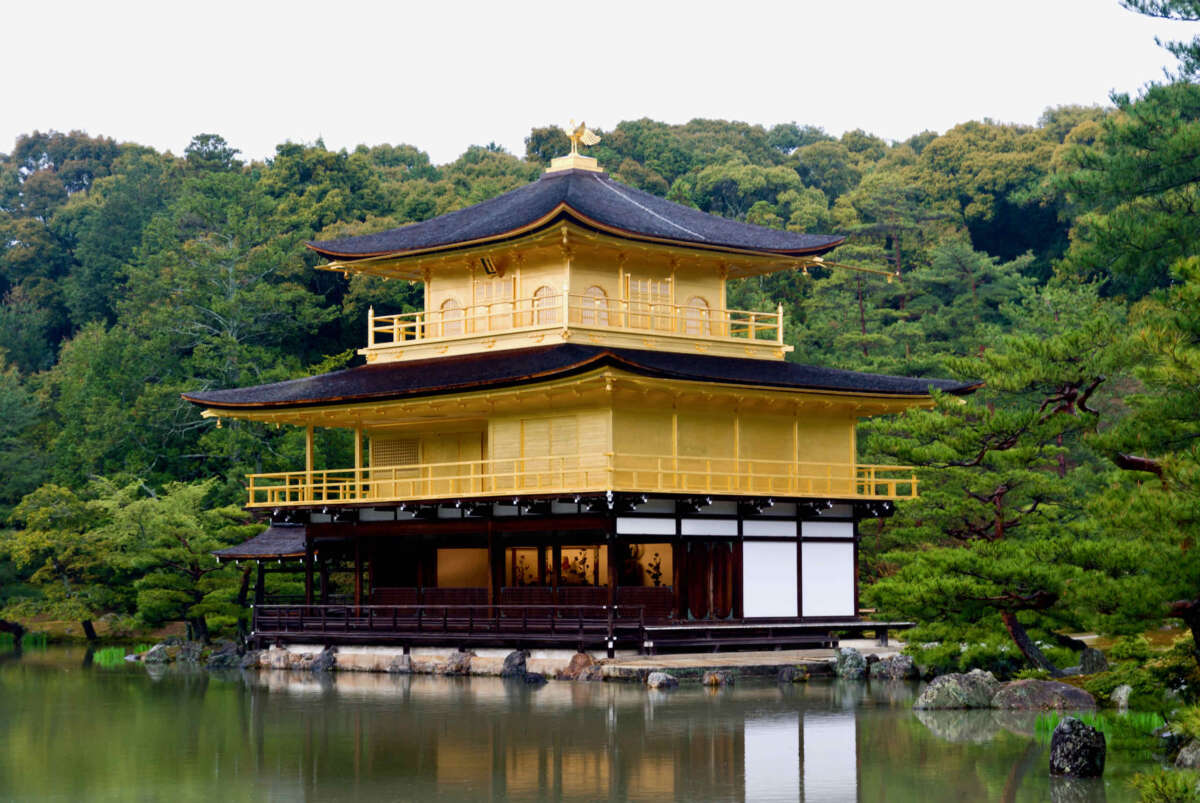
Kinkakuji (金閣寺), or Temple of the Golden Pavilion, is one of the must see places in Kyoto. Most of the temple is covered in gold leaf, and it’s set next to pond and therefore extremely photogenic.
Formally known as Rokuonji, the temple was the retirement villa of the shogun Ashikaga Yoshimitsu, and became a Zen temple of the Rinzai sect after his death in 1408. There is another temple called Ginkakuji (Silver Pavilion), built by Yoshimitsu’s grandson, Ashikaga Yoshimasa, and this one was supposed to be covered in silver foil but sadly is not.
Kinkakuji is majestic when viewed across a pond called Kyōko-chi (鏡湖池) or Mirror Pond, because the gold is reflected back from the water surface. It is one of 17 locations making up the Historic Monuments of Ancient Kyoto which are World Heritage Sites.
Unfortunately what we see is a reconstruction. A 22-year-old novice monk, Hayashi Yoken, burnt it in 1950, and then attempted suicide on the Daimon-ji hill behind the building. Yukio Mishima wrote a novel about the events, appropriately called The Temple of the Golden Pavilion. It was rebuilt in 1955. Even before then, it had been burnt and rebuilt many times. It certainly looks shiny and ageless.
There is a strolling garden next to the house. Apparently as you walk through this garden, the landscape and plants evoke famous places in Japanese and Chinese literature, and the layout is according to the descriptions of the Western Paradise of the Buddha Amida, evoking the harmony between heaven and earth.
